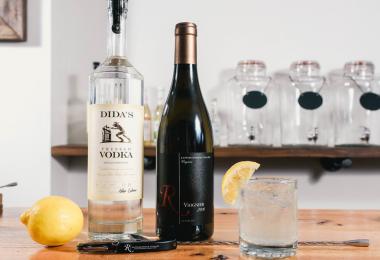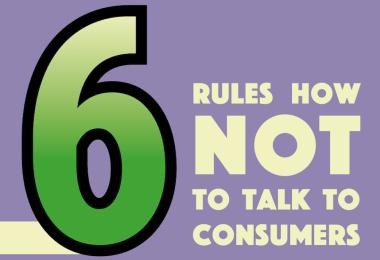Email inboxes have never been so full. In 2017, more than 269bn emails were sent every day and that’s set to rise to more than 300bn by 2020. Research company the Radicati Group has estimated that three in five people receive as many as 30 marketing-related emails a week, with many remaining unopened. Given these figures, some might question whether it is worth operating an e-newsletter.
But the research is clear: email marketing and e-newsletters are part of a content marketing strategy that wineries and wine retailers ignore at their peril.
It’s effective
Marketing surveys continually show that of all the ways to grow and retain an audience, email is the most critical. Britain’s Direct Marketing Association announced in 2018 that email marketing’s return on investment (ROI) is up to £32.28 ($41.98) for every £1.00 spent. “Like consumers, marketers still love email and we love it because it works,” says Skip Fidura, strategy and insight director at email software provider dotmailer and chair of the DMA’s responsible marketing committee. “All the standard process metrics, open rates, click rates and, most importantly, conversion rates, are up. This is in turn driving up ROI.”
Sending emails to customers with news or a newsletter on a regular basis is a way to keep a brand front of mind and drive sales; however, it is a customer retention tool rather than a customer acquisition strategy. For retailers with a bricks and mortar store or wineries with a tasting room, obtaining a customer’s email address can open up a new revenue avenue. They have already shown interest in the winery’s or store’s products and services by walking through the door; provide that customer with a great in-store experience and after-sales digital experience and a positive emotional connection is born. “It costs $75.00 to $150.00 to acquire a customer outside of the winery using e-commerce,” says Paul Mabray, CEO of data analytics company Emetry. “That’s a lot of money that you have to recover over time. If your tasting room staff collect an email at the cellar door, that doesn’t cost and that person has an emotional connection because they’ve visited, so that’s why email is still so effective. “
For US wineries with direct-to-consumer ambitions, the complementary nature of wine tourism and e-newsletter promotions is quantifiable: a three-year study of winery sales by Vin65 found that 89% of e-commerce was in the hands of just 20% of wineries. The most successful wineries weren’t necessarily the biggest, but what they all had in common was possession of a significant email list, with an average database of 20,000 people.
It’s one thing to accumulate names, but the next challenge is keeping the customer database interested in receiving emails by creating engaging mailouts and newsletters. Wineries and the people who run them usually have great stories to tell and beautiful images to share – but it is unlikely the recipient is as interested in the winery dog as the dog owner believes. Inboxes are filled with ‘buy-from-us’ emails every day, so offering something that is relevant or useful in conjunction with an offer or event is crucial. It’s not just that emails are becoming more personalised: The State of Corporate Social Media report found one emerging trend is “backing away from bombarding customers with a surfeit of communication and taking a more customer-centric approach to interacting”.
Discovering customers’ preferences can be done by analysing open and click- through rates and unsubscribes, or via a survey on the preliminary sign-up form. While there’s no specific data on the wine industry, retail and restaurant newsletters enjoy a 20% open rate, even though click-through rates for most industries hover around the 3% mark.
Getting personal
A personalised greeting such as “Hi John” or “Dear Alex” is no longer enough to encourage the recipient to read an email or newsletter. Personalisation is becoming increasingly sophisticated via smart or dynamic content which adapts according to the recipient’s past behaviour. Amazon recommends books the user might like and Spotify offers music recommendations based on previous choices. While the wine industry might not be as sophisticated at personalisation as Amazon, there are tools, including software linked to sales systems, that can make content more suitable for the recipient. “With email marketing, we are not very good at segmenting our customers,” says Mabray, saying that a Napa Valley winery that sends out an invitation email to someone living in Germany, or a ‘Buy My Chardonnay’ offer to someone who only buys Cabernet Sauvignon, can damage its image. “That’s a waste of an email and irritating to them. We are getting better at it but we are still using email as a blunt instrument. We call it spray and pray. And we need to do a better job at segmenting. The best e-commerce companies are doing a good job – offering customers the content they want and providing a great shopping experience.”
How often to email?
It’s one of those questions that elicits a different response from every individual. The aim is to maximise the response, whether that’s opening, clicking-through, reading time, sharing or converting to a sale. The frequency of emails, or cadence, might be daily, weekly, every second week, monthly or longer. Email too frequently and that can lead to many people unsubscribing, emotionally unsubscribing or marking emails as spam: 35% of consumers admit that they have marked an email from a brand as spam. However, failing to email regularly may lead to lost opportunities to build a relationship and sell a product; there is also a danger that sporadic emails create a perception that the sender is disorganised. Emily Harrison, VP of direct relationships at Napa’s Hall Wines, explains: “We have played around a lot with the cadence. You have to have a rigorous testing plan, so we are constantly watching opt-outs. We like to reach out to everybody once a week, but with a certain segment we have more opting out so we pull back to once every two weeks.”
Pair an e-newsletter with other digital forms of communication for greatest effect. It has been calculated that the average office worker receives 121 emails every day, with spam accounting for almost half. It is easy to miss an email or overlook it during a busy work day but when an email is paired with a Facebook post or digital advert, this can prompt the recipient to revisit the email or read it on a social platform. Harrison explains: “We use Facebook as another touch point: it allows us to talk to members even if they aren’t opening the email or maybe they opened the email and they were busy because they are doing a million other things like all of us. Now we can retarget them on Facebook: maybe they’re on the couch and they see the Facebook post at night after the kids have gone to bed or they’re relaxing on the couch.”
While email is seemingly king of marketing communications, traditional newsletters and mailouts aren’t dead yet. Fine wine customers and lifelong clients are often given special treatment and print is still a well-loved mode of communication for this VIP segment. For example, at New Zealand winery Pegasus Bay, every domestic customer who buys a case at the cellar door is offered the opportunity to receive its three-times- a-year newsletter. There are currently about 4,000 people on its domestic database; overseas subscribers receive an e-version. Marketing manager Edward Donaldson says: “We like people to receive the newsletter because we use good paper stock and it’s quite heavy on content. People are quick to hit the delete button because they are inundated [with emails]. It obviously costs a lot more [to produce the printed copy], but people put it in on their coffee tables and read it over time and we receive good feedback.”
That said, marketers believe that online is the future: blogs, email newsletters and social media content are the top three most important tactics to the marketing success of their organisations, reports The Content Marketing Institute, a New York-based training provider. Email provides a direct route to the customer, allowing a brand’s message to be communicated, but it must be relevant to the recipient, personalised and provide a great reader experience.
Getting started
• Integrate newsletters, emails and social media channels into a customer relationship management (CRM) system where possible. Software including Salesforce, Magento and Microsoft Dynamics allows businesses to segment their customers by location and buying preferences and email them accordingly. Hall Wines, for example, uses Salesforce with IBM’s Silverpop software.
• Use an email service provider which provides a professional-looking template, technical information and analytics to manage the subscriber list. There are many available, but some of the most popular include Mailchimp, Constant Contact and Campaign Monitor.
• Make the subject line compelling and change it for every newsletter. It should be no longer than 50 or 60 characters.
• Manage the subscriber list effectively. If a recipient unsubscribes, it is imperative that they are removed from the list or there are potential legal issues. It is also important to pay attention to inactive or unengaged email addresses: in one survey, 79% of respondents admitted to having an email address specifically for marketing communications, with many claiming they felt overloaded.
• Make it mobile – more than half of all emails sent in 2017 were read on a mobile device, compared with 29% in 2012, according to international email marketing company Return Path.
• Test it and test it again; check it looks great across all platforms whether it’s smartphone, tablet or desktop.
• Test how often customers want to receive your emails; build a preference centre: give the customer the choice to decide on the volume, frequency and category of emails they receive.
Staying safe
The European Union’s General Data Protection Regulation (GDPR) came into force on 25 May 2018. To stay on the safe side of the legislation, use a double opt-in: when customers sign up for your email, send them a follow-up asking them to confirm their subscription. Make the unsubscribe process obvious and effective. Communicate your privacy policy to recipients, which means telling them what you intend to do with their data. Also be wary of buying email lists as there may be people on the list who didn’t opt in to it. But don’t be afraid to use newsletters: most of the big newsletter software services are in compliance with the GDPR (though do check). FC








